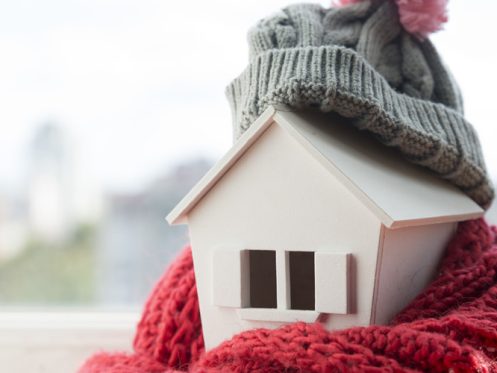While “preppers” may have a reputation for their enthusiasm about emergency readiness, being prepared is essential for staying safe this season, and simple weatherizing steps can also help you conserve energy, lower heating bills and reduce strain on heating systems and the electric grid. By planning ahead, you can enjoy peace of mind no matter the weather!
Tip 1: Power Outage Preparation
Equip your home with a three-day supply of nonperishable foods, water and essential personal/household items including medication, baby formula and pet food. In Texas, ice storms or flooding can leave you stranded or without power, so having these items on hand can be crucial.
With advanced storm warning, fully charge cellphones, laptops, medically necessary devices or other electricity-dependent devices. Download apps that provide emergency notifications and make a family communications plan in case network outages occur as well.
Investing in extra batteries, a weather radio or a backup power source are additional ways to stay safe, comfortable and informed until power is restored.
Tip 2: Winterize Your Vehicle
Get your car winter-ready by checking there is sufficient antifreeze, the battery is in good condition, there is adequate tread on the tires and the windshield wipers work well with a proper level of washer fluid rated for lower temperatures.
Also be aware, daily driving and charging behaviors may need to be adjusted in winter months for your Electric Vehicle (EV). Protect your charging equipment from freezing and keep the EV covered when exposed to the elements, when possible. Additional “preconditioning” features may be available on your model of EV as well.
Allow extra time, be aware of road conditions and stay prepped to reduce accidents and avoid costly delays or repairs.
Tip 3: Weatherproof Your Home
Leaks, gaps and holes allow cold air to sneak in during the winter, which means your heating system needs to do extra work to keep the indoor air at the temperature you’d like.
Sealing drafts throughout your home can save up to 30 percent on heating and cooling bills. That adds up to big bucks when you consider how little caulk and weatherstripping materials cost.
Don’t forget to check that your attic is also well insulated and draft free. Additionally, insulate water pipes or allow faucets to drip to avoid freezing, clear rain gutters of debris and cut away tree branches that could fall on your home.
Tip 4: Heating and Safety Precautions
Make sure your heating systems and sources are in good condition and air flow is not obstructed. It is recommended to set your thermostat at 68 degrees-or as low as you can comfortably tolerate-during the winter months.
Space heaters can be a smart choice to heat a small room or direct heat toward a specific area or person. Utilizing fire places and wood burning stoves are good alternate sources as well. Be aware of the potential safety hazards and plan accordingly.
Above all, maintaining good indoor air quality and ventilation is important for safety. Ensure your smoke and CO2 detectors are in good working order and keep a fire extinguisher nearby.
Tip 5: Smart Thermostat and Energy Efficiency
Consider installing a smart thermostat for energy savings and efficiency. It will help regulate your home’s temperature, lowering heating costs while keeping you comfortable.
Put some energy into energy-efficiency planning and start by setting up a free home energy audit from GVEC. Our experts tailor each audit to the member’s specific concern or problem area and map out a solution to make the journey to energy efficiency more achievable.
Lastly, remember weather matters. It makes sense that when the outdoor temperature is drastically different from the cozy warmth we want inside, heating systems must work harder to keep up. This extra effort directly impacts your energy bill, but the effect depends heavily on your home’s energy efficiency. For example, when your thermostat is set to 68 degrees and the outside tem- perature drops to 48 degrees, your system has to overcome a 20-degree difference. Now imagine a milder day at 60 degrees— your system only works against an 8-degree difference, significantly reducing energy demand.
This winter, take control of your energy usage! Start by ensuring your home is as energy-efficient as possible: seal drafts, maintain your heating system, and make use of tools like the MyGVEC app to monitor your energy use. By taking these proactive steps, you can call yourself a winter-weather-prepper!



